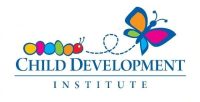
Autism is a disorder that is usually first diagnosed in early childhood. The main signs and symptoms of autism involve communication, social interactions and repetitive behaviors.
Children with autism might have problems talking with you, or they might not look you in the eye when you talk to them. They may have to line up their pencils before they can pay attention, or they may say the same sentence again and again to calm themselves down. They may flap their arms to tell you they are happy, or they might hurt themselves to tell you they are not. Some people with autism never learn how to talk.
Because people with autism can have very different features or symptoms, health care providers think of autism as a “spectrum” disorder. Asperger syndrome is a milder version of the disorder.
The cause of autism is not known. Autism lasts throughout a person’s lifetime. There is no cure, but treatment can help. Treatments include behavior and communication therapies and medicines to control symptoms.
Autism FAQ
What is autism?
Autism is not a disease, but a developmental disorder of brain function. People with classical autism show three types of symptoms: impaired social interaction, problems with verbal and nonverbal communication and imagination, and unusual or severely limited activities and interests. Symptoms of autism usually appear during the first three years of childhood and continue throughout life. Although there is no cure, appropriate management may foster relatively normal development and reduce undesirable behaviors. People with autism have a normal life expectancy.
Autism affects an estimated two to 10 of every 10,000 people, depending on the diagnostic criteria used. Most estimates that include people with similar disorders are two to three times greater. Autism strikes males about four times as often as females, and has been found throughout the world in people of all racial and social backgrounds.
Autism varies a great deal in severity. The most severe cases are marked by extremely repetitive, unusual, self-injurious, and aggressive behavior. This behavior may persist over time and prove very difficult to change, posing a tremendous challenge to those who must live with, treat, and teach these individuals. The mildest forms of autism resemble a personality disorder associated with a perceived learning disability.
What are some common signs of autism?
The hallmark feature of autism is impaired social interaction. Children with autism may fail to respond to their names and often avoid looking at other people. Such children often have difficulty interpreting tone of voice or facial expressions and do not respond to others’ emotions or watch other people’s faces for cues about appropriate behavior. They appear unaware of others’ feelings toward them and of the negative impact of their behavior on other people.
Many children with autism engage in repetitive movements such as rocking and hair twirling, or in self-injurious behavior such as biting or head-banging. They also tend to start speaking later than other children and may refer to themselves by name instead of “I” or “me.” Some speak in a sing-song voice about a narrow range of favorite topics, with little regard for the interests of the person to whom they are speaking.
People with autism often have abnormal responses to sounds, touch, or other sensory stimulation. Many show reduced sensitivity to pain. They also may be extraordinarily sensitive to other sensations. These unusual sensitivities may contribute to behavioral symptoms such as resistance to being cuddled.
How is autism diagnosed?
Autism is classified as one of the pervasive developmental disorders. Some doctors also use terms such as “emotionally disturbed” to describe people with autism. Because it varies widely in its severity and symptoms, autism may go unrecognized, especially in mildly affected individuals or in those with multiple handicaps. Researchers and therapists have developed several sets of diagnostic criteria for autism. Some frequently used criteria include:
- Absence or impairment of imaginative and social play
- Impaired ability to make friends with peers
- Impaired ability to initiate or sustain a conversation with others
- Stereotyped, repetitive, or unusual use of language
- Restricted patterns of interests that are abnormal in intensity or focus
- Apparently inflexible adherence to specific routines or rituals
- Preoccupation with parts of objects
Children with some symptoms of autism, but not enough to be diagnosed with the classical form of the disorder, are often diagnosed with pervasive developmental disorder – not otherwise specified (PDD – NOS). The term Asperger syndrome is sometimes used to describe people with autistic behavior but well-developed language skills. Children who appear normal in their first several years, then lose skills and begin showing autistic behavior, may be diagnosed with childhood disintegrative disorder (CDD). Girls with Rett’s syndrome, a sex-linked genetic disorder characterized by inadequate brain growth, seizures, and other neurological problems, also may show autistic behavior. PDD – NOS, Asperger syndrome, CDD, and Rett’s syndrome are sometimes referred to as autism spectrum disorders.
Since hearing problems can be confused with autism, children with delayed speech development should always have their hearing checked. Children sometimes have impaired hearing in addition to autism. About half of people with autism score below 50 on IQ tests, 20 percent score between 50 and 70, and 30 percent score higher than 70. However, estimating IQ in young children with autism is often difficult because problems with language and behavior can interfere with testing. A small percentage of people with autism are savants. These people have limited but extraordinary skills in areas like music, mathematics, drawing, or visualization.
What causes autism?
Autism has no single cause. Researchers believe several genes, as well as environmental factors such as viruses or chemicals, contribute to the disorder. Studies of people with autism have found abnormalities in several regions of the brain, including the cerebellum, amygdala, hippocampus, septum, and mamillary bodies. Neurons in these regions appear smaller than normal and have stunted nerve fibers, which may interfere with nerve signaling. These abnormalities suggest that autism results from disruption of normal brain development early in fetal development. Other studies suggest that people with autism have abnormalities of serotonin or other signaling molecules in the brain. While these findings are intriguing, they are preliminary and require further study. The early belief that parental practices are responsible for autism has now been disproved.
In a minority of cases, disorders such as fragile X syndrome, tuberous sclerosis, untreated phenylketonuria (PKU), and congenital rubella cause autistic behavior. Other disorders, including Tourette syndrome, learning disabilities, and attention deficit disorder, often occur with autism but do not cause it. For reasons that are still unclear, about 20 to 30 percent of people with autism also develop epilepsy by the time they reach adulthood. While people with schizophrenia may show some autistic-like behavior, their symptoms usually do not appear until the late teens or early adulthood. Most people with schizophrenia also have hallucinations and delusions, which are not found in autism.
What role does genetics play?
Recent studies strongly suggest that some people have a genetic predisposition to autism. Scientists estimate that, in families with one autistic child, the risk of having a second child with the disorder is approximately five percent, or one in 20, which is greater than the risk for the general population. Researchers are looking for clues about which genes contribute to this increased susceptibility. In some cases, parents and other relatives of an autistic person show mild social, communicative, or repetitive behaviors that allow them to function normally but appear linked to autism. Evidence also suggests that some affective, or emotional, disorders, such as manic depression, occur more frequently than average in families of people with autism.
Do symptoms of autism change over time?
Symptoms in many children with autism improve with intervention or as the children mature. Some people with autism eventually lead normal or near-normal lives. However, reports from parents of children with autism indicate that some children’s language skills regress early in life, usually before age three. This regression often seems linked to epilepsy or seizure-like brain activity. Adolescence also worsens behavior problems in some children with autism, who may become depressed or increasingly unmanageable. Parents should be ready to adjust treatment for their child’s changing needs.
How can autism be treated?
There is no cure for autism at present. Therapies, or interventions, are designed to remedy specific symptoms in each individual. The best-studied therapies include educational/behavioral and medical interventions. Although these interventions do not cure autism, they often bring about substantial improvement.
Educational/behavioral interventions: These strategies emphasize highly structured and often intensive skill-oriented training that is tailored to the individual child. Therapists work with children to help them develop social and language skills. Because children learn most effectively and rapidly when very young, this type of therapy should begin as early as possible. Recent evidence suggests that early intervention has a good chance of favorably influencing brain development.
Medication: Doctors may prescribe a variety of drugs to reduce self-injurious behavior or other troublesome symptoms of autism, as well as associated conditions such as epilepsy and attention disorders. Most of these drugs affect levels of serotonin or other signaling chemicals in the brain.
Many other interventions are available, but few, if any, scientific studies support their use. These therapies remain controversial and may or may not reduce a specific person’s symptoms. Parents should use caution before subscribing to any particular treatment. Counseling for the families of people with autism also may assist them in coping with the disorder.
Prepared by
Office of Scientific and Health Reports
National Institute of Neurological Disorders and Stroke
National Institutes of Health
Bethesda, Maryland 20892-2540
NIH Publication No. 96-1877
Original Publication Date: August 1996

